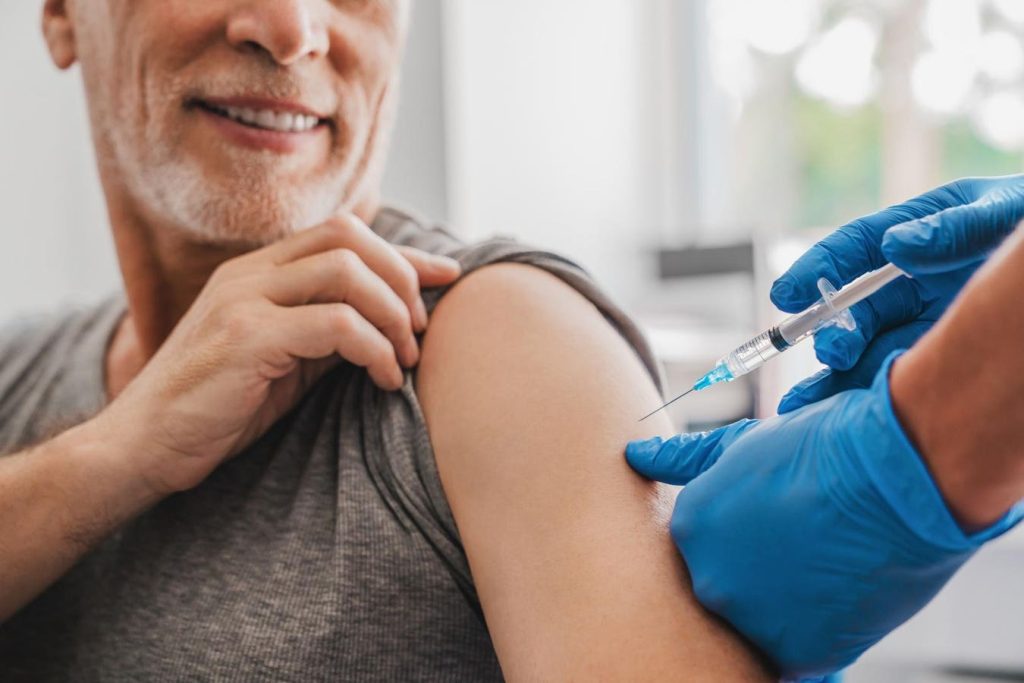Medicare has a notorious history of not treating vaccinations equally. Here’s an example from Ed, one of my clients.
My physician’s office contacted me because I was due for my DTaP (diphtheria, tetanus, and pertussis) booster. I made an appointment. Then, I got the vaccine and a bill for $148 ($101 vaccine and $47 administration).
What’s going on? I never got bills for flu or pneumonia shots from my doctor’s nurse.
Medicare Part B, medical insurance, covers flu and pneumonia vaccinations with no deductible or copayment. When COVID crashed into the world, Part B paid for that, too. Medicare also covers the Hepatitis B vaccine for those at medium or high risk and vaccines directly related to an injury, such as tetanus, or direct exposure to a disease or condition, including rabies or botulism.
Then, all the other vaccines that seniors need to stay healthy are not covered under Part B. At the top of the list is shingles, followed by Hepatitis B to non-high-risk individuals, and DTaP, to name a few. The Centers for Medicare and Medicaid Services (CMS) requires Part D prescription drug plans to provide access to those and they all were subject to any deductible and cost sharing. For example, once meeting the plan’s deductible (maximum of $485 in 2022), there was a copayment for each shingles shot, around $200, definitely unequal treatment of Part D vaccinations.
Thankfully, as of January 1, 2023, Medicare is treating all vaccines the same when it comes to cost sharing. Part D vaccinations are not subject to a deductible and there is no copayment or coinsurance.
Costs may be equal, but administration is still treated differently
Medicare beneficiaries can get Part B vaccinations in a physician’s office or a pharmacy. If you have Original Medicare, any doctor or pharmacy that accepts Medicare assignment can provide the vaccination. If you elected Medicare Advantage, you should visit a doctor or pharmacy in the plan’s network. Show up, present the necessary insurance card(s) and you’re done.
It doesn’t work the same way for Part D vaccinations, as Ed learned. He asked why his physician’s office was a problem. Part D covers drugs from in-network providers. CMS considers physicians’ offices as out-of-network. That’s because Part D networks are defined as pharmacy networks only.
Then he asked about the bill, something he didn’t see with his other vaccinations. (The bill includes the costs associated with Part D vaccines including the vaccine ingredient cost, a dispensing fee (if applicable), and an administration fee.) Ed called Medicare, his supplement insurance company, and finally, his Part D drug plan. He learned that, since the shot was administered out-of-network, he must pay the physician’s bill and then submit the drug plan’s form for reimbursement. The form asks for information that Ed wouldn’t have, such as the NPI (National Provider ID) for the physician and the national drug code (the FDA’s identifier). He has to contact his physician’s office for help.
Will Ed and others ever be able to get all vaccines from their doctors? About 15 years ago, when the first shingles vaccine, Zostavax, appeared, a MLN Matters transmittal noted, “Requiring the beneficiary to pay the physician’s full charge for a vaccine out of pocket first and be reimbursed by the plan later is not an optimal solution.” CMS encouraged doctors to submit claims for Part D vaccinations using a web-based portal and agree to accept the plan’s payment as payment in full. Based on the questions I get, that’s still a work in progress.
I found several plans’ reimbursement forms online. Buried somewhere, you’ll likely find a sentence or two that claims are subject to the plan’s provisions; in other words, the amount the plan would have paid for vaccination at a pharmacy. There’s a chance that the reimbursement the plan members get may be less than the amount paid to the physician’s office.
Skip the hassle and bills
The next time you need a Part D vaccine, such as the new RSV (Respiratory Syncytial Virus), visit a pharmacy in your plan’s network. You won’t get a bill or have to submit a claim.
Ed learned his lesson. Next time, he’ll visit a network pharmacy.
Read the full article here




